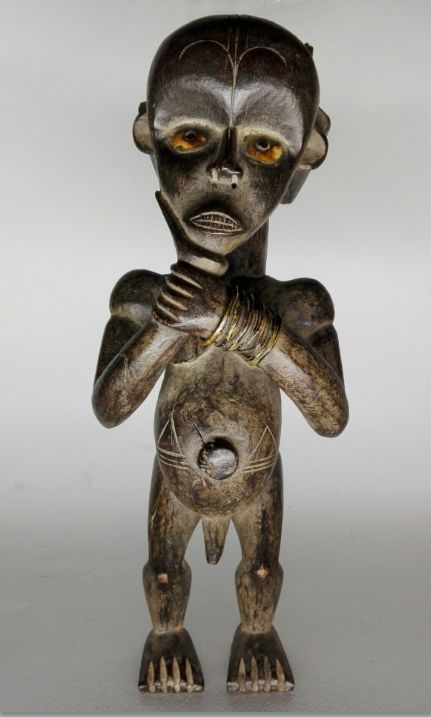Description
Africa. Very beautiful statue of ancestor, guardian of Fang reliquary, Betsi-Mvaï. Gabonese Republic. Wood, metal. Among the Fang, spiritual life permeated all ways of thinking and living. If they admitted the existence of a creative divinity and a primordial hero, they expected everything from their own family ancestors: luck, fertility of women, success in hunting and wealth. Precious family relics were kept in sewn bark boxes and guarded by statuettes combining ancestral features and newborn bodies. Ref : Les forêts natales, musée du Quai Branly, 2017. p. 178 - Similar p. 204. Dimensions : Approx. height : 36CM. (Africa, African art, Civilization and ethnic groups).
28
Africa. Very beautiful statue of ancestor, guardian of Fang reliquary, Betsi-Mvaï. Gabonese Republic. Wood, metal. Among the Fang, spiritual life permeated all ways of thinking and living. If they admitted the existence of a creative divinity and a primordial hero, they expected everything from their own family ancestors: luck, fertility of women, success in hunting and wealth. Precious family relics were kept in sewn bark boxes and guarded by statuettes combining ancestral features and newborn bodies. Ref : Les forêts natales, musée du Quai Branly, 2017. p. 178 - Similar p. 204. Dimensions : Approx. height : 36CM. (Africa, African art, Civilization and ethnic groups).
You may also like
